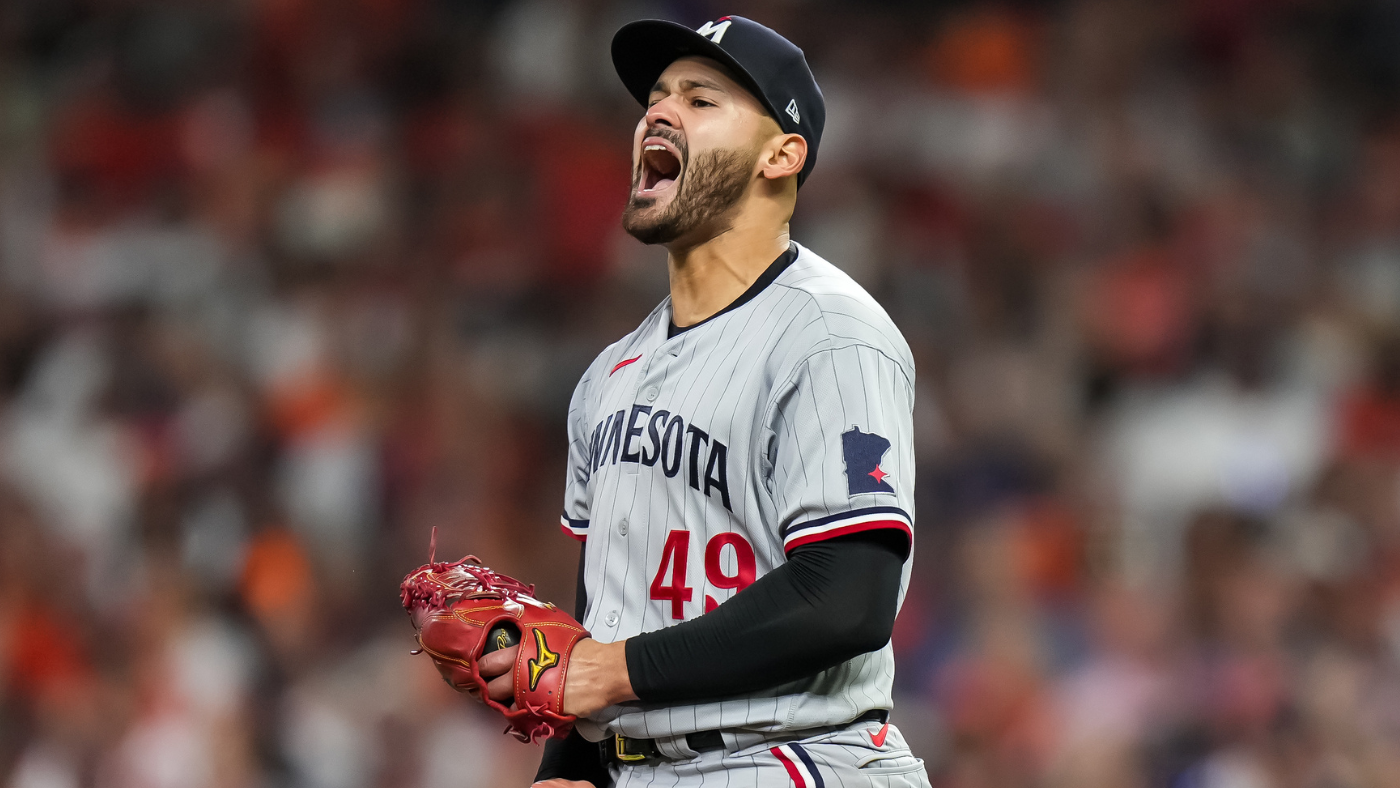How Pablo López-Luis Arraez trade between Twins, Marlins epitomizes win-win deal one year later
Written by CBS SPORTS ALL RIGHTS RESERVED on January 22, 2024


The Minnesota Twins will not play their first regular season contest until March 28, when they head to Kansas City to face the Royals. That’s 69 days off, or the same distance from today to November 7. (Remember, the World Series concluded on November 1.) Nevertheless, Twins manager Rocco Baldelli decided this week to name right-hander Pablo López his Opening Day starter.
Give Baldelli credit for clever timing. Saturday (Jan. 20), marks a year since the Twins obtained López from the Miami Marlins as part of a four-player trade that sent MLB‘s reigning batting champion, Luis Arraez, down south.
Occasionally, we here at CBS Sports like to reflect on notable or interesting trades and offer commentary on how they’ve worked out for all parties. You can guess where we’re going here, so let’s skip the throat-clearing sentence in favor of reprinting the deal in its whole form and getting on to the good stuff:
- Twins receive: RHP Pablo López, INF Jose Salas, and OF Byron Chourio.
- Marlins receive: INF Luis Arráez
Got it? Now, let’s tackle five takeaways from the trade.
1. A win-win deal
There’s a reason this trade has been known as a win-win arrangement for the last 364 days. It started with a basic strength-for-strength premise: the Twins moved a hitter from their logjam of young position players to fill a hole in their rotation; the Marlins did the inverse, subtracting from their overbrimming staff for a needed bat.
Both players then lived up to expectations (and perhaps surpassed them) last season, resulting in everyone thinking of the deal as a mutually beneficially one. That perception was reality, based on how the two player stack up through the lens of the various Wins Above Replacement metrics:
| WAR version | Luis Arraez | Pablo López |
|---|---|---|
Baseball-Reference | 4.9 | 3.3 |
FanGraphs | 3.4 | 4.5 |
Baseball Prospectus | 4.8 | 4.8 |
| Average | 4.4 | 4.2 |
It doesn’t get much closer than that. Moving on, let’s tackle each of the players individually.
2. López made legitimate gains with Twins
López, now 27, leveled-up to earn Cy Young Award consideration for the first time in his career. He struck out a personal-best 10.9 batters per nine innings and established a new high in frames with 194 pitched. López’s 117 ERA+ was the second-best of his career for a season in which he topped 100 innings. If you go off FanGraphs’ Wins Above Replacement metric, his 4.5 ranked 10th most in the majors, even ahead of NL Cy Young winner Blake Snell.
López made several noticeable changes to his game. He upped his fastball velocity from 93.5 mph to 94.9 mph; he reduced the usage rate of his signature changeup, from 35.4% to 21.1%; and he introduced a new breaking ball, a sweeper, that resulted in his staff’s highest whiff rate (36.6%).
In short, this wasn’t a case where López benefited from external factors, such as a more cavernous ballpark or a weaker slate of competition; here, the Twins identified things he could do better and worked with him to do them better. Job well done: López is a different, improved pitcher than he was with the Marlins.
It’s notable, then, that López would be a season away from free agency and cashing in on his higher established talent level … except the Twins quickly doubled-down on their original trade by signing him to a four-year deal worth $73.5 million in April. López will not make more than $21.5 million during his time in Minnesota. For reference, that’s only a few million more per season than Lucas Giolito will earn in 2024-25 after two disappointing years.
3. Arraez delivered with unique skill set
The Marlins finished the 2022 season ranked 27th in batting average and 28th in runs scored. In response, Kim Ng spent her last offseason in charge of Miami adding high-contact hitters. That group included Yuli Gurriel, Joey Wendle, Jean Segura, and, yes, Arraez. Say what you will about the failures of the others — Gurriel finished with a 79 OPS+ and both Segura and Wendle put up marks in the 50s — but the decision to cash in some of their pitching and prospect depth to add Arraez has to date proved to be a winner.
Arraez followed up his breakout 2022 campaign by improving his OPS by 66 points. He flirted with a .400 average for half of the season, and finished with a .354/.393/.469 (133 OPS+) slash line and a career-high 10 home runs with more walks than strikeouts. He saw action at both second and third base, performing well enough to produce an estimated 4.9 Wins Above Replacement.
It’s been easy to forget, but there were questions about the repeatability of Arraez’s 2022. Go figure that he enjoyed greater success by becoming a more extreme version of himself. He swung more, in and out of the zone, resulting in a lower walk rate. His average and maximum exit velocities each declined, and his percentage of hard-hit balls — that is batted balls with an exit velocity of 95 mph or higher — dropped nearly five percentage points year-to-year, putting him closer to a career-worst mark than his 2022 number.
Arraez’s keys to success remain making an absurd amount of contact (he whiffed less than 8% of the time) and spraying the ball to center and the opposite field. His 29.6% pull rate was the fourth lowest in the majors. That happens to be a good thing. Drew Haugen of Down on the Farm recently noted that “hitters on the lower end of the raw power spectrum,” like Arraez, tend to see better “production to the opposite field” than their more powerful peers.
4. What comes next for Arraez?
Whether or not Arráez remains this productive — meaning 30% or better than the league-average hitter — is to be seen. It’s probably safe to conclude that he has an unusual skill set that should allow him above-average production. The bigger question is what the Marlins and new head of baseball operations Peter Bendix do with him.
Arraez is not slated for free agency until after the 2025 season, but his name has surfaced in trade rumors this winter, likely in response to an escalating price tag. Arraez and the Marlins are heading for arbitration after he asked for $12 million for 2024 and the team countered with $10.6 million. For as good as Arraez was last season, we’re still talking about a Marlins franchise that hasn’t had a payroll higher than $100 million since 2017. Bendix will have only so much wiggle room to pay a single player.
If and when the Marlins decide to move Arraez, it’ll be fascinating to see how other teams value him. For the time being, though, Miami can rest easy knowing that this trade worked out and Arráez played a leading role in helping the Marlins secure their first full-season playoff berth since 2003.
5. Prospects remain secondary
Neither Salas nor Chourio are considered top 10 prospects in the Twins system. In fact, both are considered inferior prospects to their brothers: Padres wunderkind backstop Ethan Salas and Brewers outfielder Jackson Chourio. Salas had a poor season in High-A while Chourio held his own in complex ball.
Even if Salas and Chourio never produce a single win for the Twins, Minnesota has reason to be thrilled with how this deal worked out. Now, if only they could repeat the trick this winter, turning part of their position player surplus — a Max Kepler or Jorge Polanco — into a high-quality rotation upgrade.
The post How Pablo López-Luis Arraez trade between Twins, Marlins epitomizes win-win deal one year later first appeared on CBS Sports.







